When it comes to fall, we think of the colors trees and shrubs give us. Then there are the ever-present mums. But other late bloomers call this their time of year in the Indiana landscape, too. Here are five.
Japanese anemone
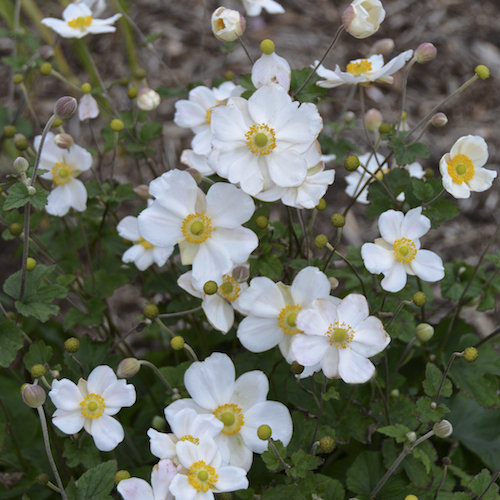
‘Honorine Jobert’ Japanese anemone. Photo courtesy PerennialResource.com
In 2016, the Perennial Plant Association named ‘Honorine Jobert’ Japanese anemone its Perennial Plant of the Year. This strong blooming beauty has white flowers with yellow centers. Other Japanese anemones (A. japonica) have a range of pink to reddish flowers that are single or double.
This perennial tends to be 3 to 4 feet tall, but newer introductions, such as ‘Pretty Lady Diana’, are closer to 18 inches. Grow Japanese anemones in full sun to part shade.
In the landscape, Japanese anemones bloom in late summer into early fall. When the flowers are done, the petals fall away and the center swells to take on the appearance of cotton ball. That look persists to offer a little bit of winter interest in the landscape.
Native aster
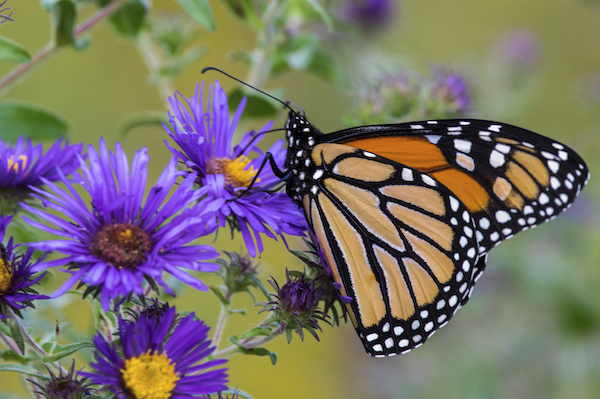
A monarch butterfly sucks nectar from a purple aster. (C) Photo R. Runtsch/iStockphoto.com
Our native butterflies and other fauna are hard wired to seek out native asters and other late-season plants for nutrition as the bulk up for their migration. Asters bloom in early to late fall, sometimes even into November in the Indiana landscape.
Asters like a sunny spot and once established, are fairly tolerant of dry conditions. Some asters may get too tall and leggy, so cut them back by one-third to one-half a time or two before mid-July. This allows for more flowers on a more compact plant.
Hardy begonia
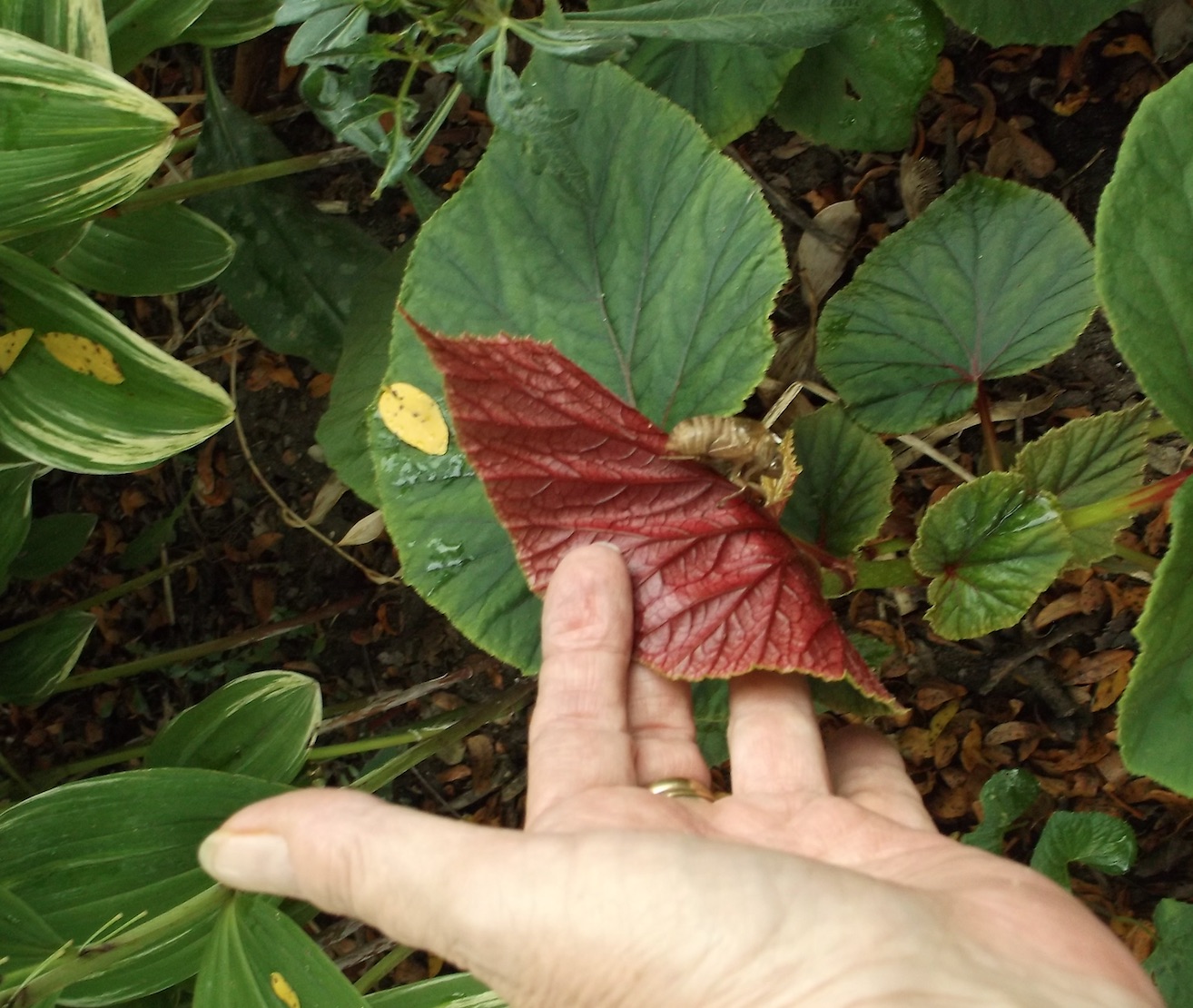
You never know what you’ll find on the other side of a leaf. The red backs of hardy begonia are beautiful with or without the cicada shell. (C) Photo Jo Ellen Meyers Sharp
This begonia (B. grandis) has the same characteristics we like, and that’s beautiful leaves. Sure it has a lovely begonia-like pink or white flower in late summer and early fall. But the leaves are the best part of this under used perennial. They are large, green on one side and red-veined on the underside.
Hardy begonias have a tendency to self-sow, showing up a distance from where they were planted. But this is not a serious concern. Many gardeners transplant the escapees to more desirable spots. Hardy begonias also tend to break dormancy late, maybe not announcing their presence until June.
Consider planting hardy begonias with hosta, barrenwort (Epimedium), Solomon’s seal (Polygonatum), lungwort (Pulmonaria) and other shade-loving perennials in the Indiana landscape. They also can be used as under plantings for hydrangea, Japanese kerria, fothergilla and other shrubs that do well in shade. If there’s a way to get the sun to backlight leaves, you won’t be disappointed.
Toad lily
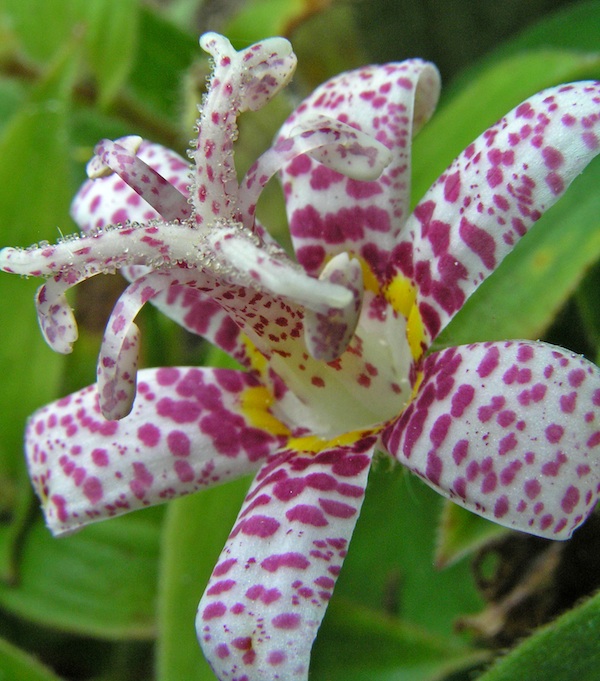
Miyazaki toad lilly. Photo courtesy PerennialResource.com
These late-summer blooming perennials have intricate, lily-like flowers. The flowers are spotted with a bumpy base and to some people, remind them of toads. Usually the flowers of toad lily (Tricyrtis) are in the pink to white range, some with a purplish cast.
This is another plant that does well in shade or part shade. This perennial, which blooms in late summer and early fall in the Indiana landscape, also can take it a bit on the wet side. Grow these amid earlier blooming perennials to extend flower color into late season. Early blooming hostas and lilies are good companions in the landscape.
Panicle hydrangea
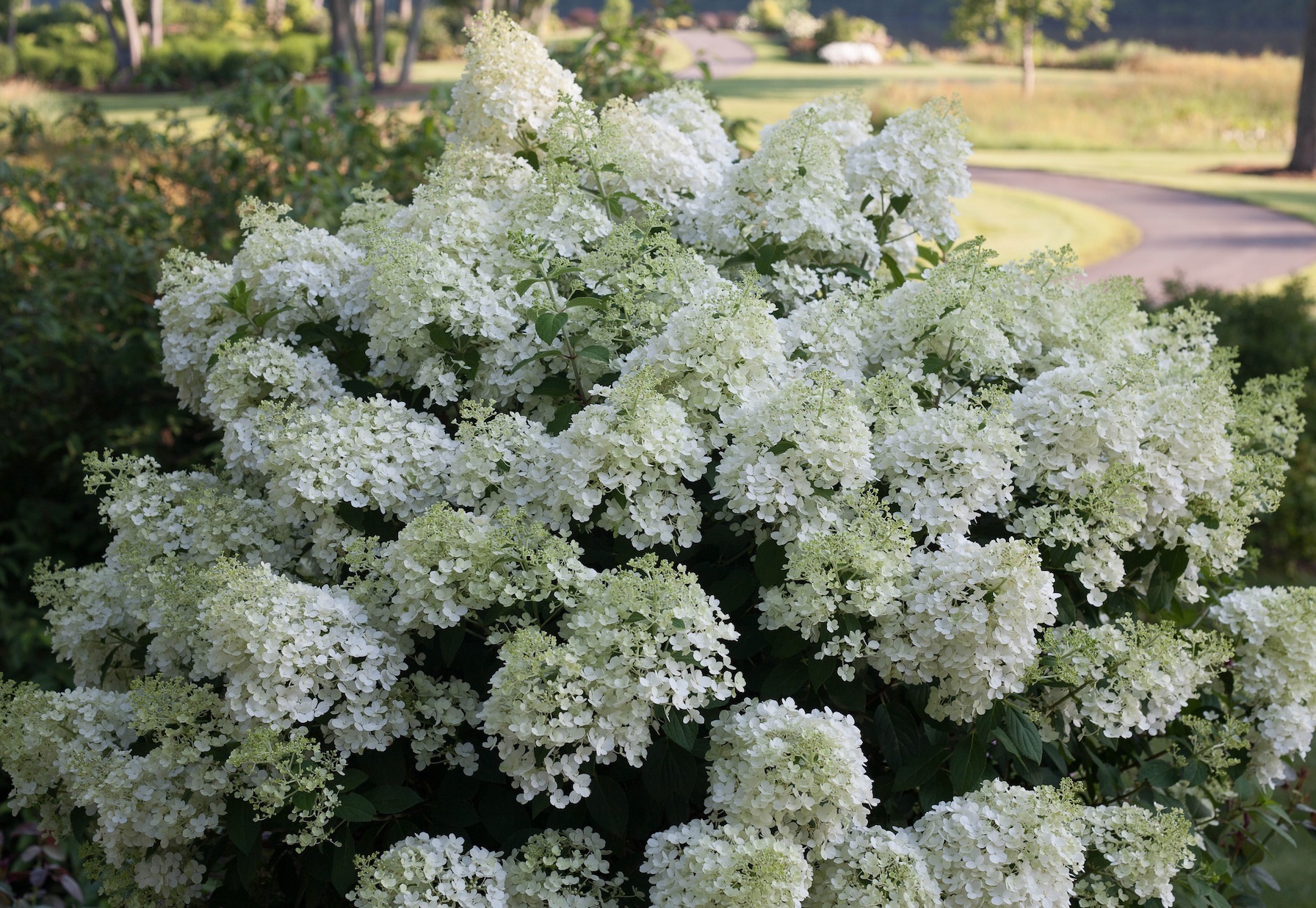
Bobo panicle hydrangea is a blooming machine. Photo courtesy Proven Winners/ColorChoice Plants
In the shrub category for late-season flowers, there’s really only one choice. If you’ve been driving around town, you’ve surely noticed the large flowering hydrangeas. Panicle hydrangeas (H. paniculata) are in their element this time of year, nourished by the spring rains and summer heat to produce their white blooms bigger than usual.
Panicle hydrangeas can be large plants in the Indiana landscape. Limelight, one of the best selling ones, easily gets 8 feet tall and wide. Breeders have reined in the size a bit with Bobo, a perfect plant and strong flower power for the smaller landscape. One lovely trait of this hydrangea is the flowers turn pink as they age.
This hydrangea thrives in full sun to light shade. It blooms on current season growth, so if pruning is necessary, do so in late winter or early spring. For more about hydrangeas, check our earlier post.
Need help?
Of course, a Holeman professional would be pleased to help you select perennials and other plants to enhance the fall color in your Indiana landscape.
